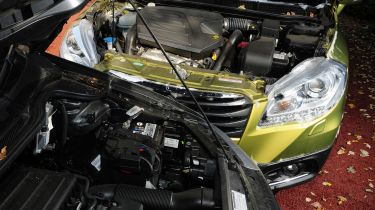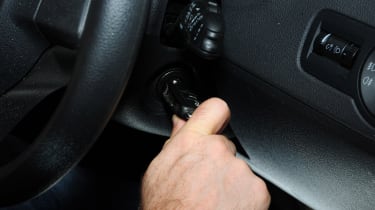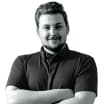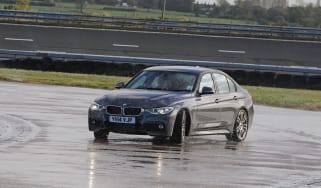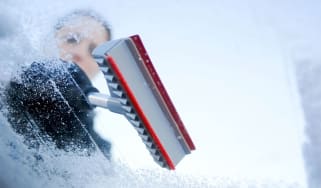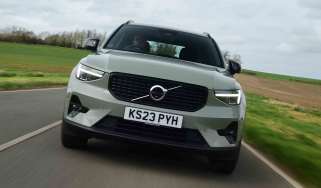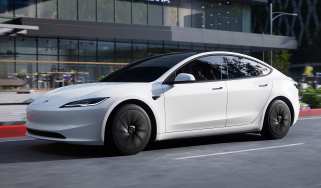How to jump start a car: your guide for dealing with a flat battery
Got a flat battery? This is how to jump start a car with jump leads or bump start it without them
When a car fails to start, a battery issue is the likely culprit. If your battery has gone flat, knowing how to jump start your car with or without jump leads to get enough charge into it for it to turn over is a useful skill. A successful jump start could mean the difference between driving yourself to sort out the underlying issue, or a long wait in the rain for the breakdown service.
Car batteries can run out of charge and need a jump start for a variety of reasons. Maybe you left your lights or radio on without the engine running, or a cold winter’s day might have slowed down the chemical reactions inside the battery's cells which give it charge. Over time a battery’s ability to hold onto charge can diminish – an old battery in need of replacement could be the reason your car refuses to start.
Jump starting your car isn’t difficult, but there are some simple mistakes which could cause damage to your car or injury to yourself if you’re not careful. If in any doubt, it’s best to leave the job to the professionals, but our step-by-step guide will show you how to safely jump start a car with a flat battery yourself, if you’re confident enough to give it a go.
Use the links below to jump to the sections of this guide…
- How to jump-start a car with jump leads
- How to jump start a car with a portable power pack
- How to bump start a car
Jump start or bump start?
There are two common methods for starting a car which has a flat battery. One of these requires jump leads and another (running) car or a battery booster pack, while for the other you’ll need to be able to get the car rolling to ‘bump’ start the engine.
Whichever way you do it, you should get your car battery checked as soon as possible after starting the car. If the battery was flat just because you left a light on then it should recover, but if it failed suddenly there could be an issue with the car’s alternator or electrical system. It could be as simple as a dirty or corroded connection, though, so it’s worth getting it checked out.
Never bump start an automatic. This method only works on manual cars. Trying it on an automatic can seriously damage the transmission. If your car is an automatic and the battery is flat, you will need jump leads or a power pack.
Before you start: jump starting a car safety tips
Jump starting or bump starting a car might seem straightforward, but it still involves electricity, moving vehicles and equipment. Done wrong, it can be dangerous for you, your car and the people around you. Before you do anything, make sure you know the risks and how to stay safe.
- Keep jewellery, scarves and loose clothing well away from the engine bay. Anything that could get caught in a moving part needs to come off or be secured. The same goes for metal objects like watches or tools that could short out a battery if dropped.
- Turn off everything electrical. Make sure both cars have their ignitions off, headlights and radios switched off, and keys out of the ignition before connecting any cables. This reduces the chance of electrical spikes when you hook up the leads.
- Be mindful of your surroundings. If you are doing this at the side of a road, wear a high-vis vest if you have one and put your hazard lights on. Make sure you are not working in a blind spot or blocking a lane.
- Read the manual if anything looks unfamiliar. Some cars have their batteries tucked away in awkward places or use special jump start terminals. If in doubt, refer to the owner’s manual to avoid causing any damage.
- Stick to proper jump leads or a tested power pack. Cheap or frayed cables can cause more harm than good. Always check the insulation and the clamps before use. If they look suspect, buy a new set. They are not expensive and it is not worth the risk.
- Check for damage before touching anything. If either battery is leaking or smells strongly of sulphur (has a horrible rotten egg smell) do not try to jump start it. A damaged or swollen battery is a fire risk and should be replaced, not revived.
- Be very careful not to connect the jump leads or a battery pack to the wrong terminals. Reversing the polarity will send a surge of current the wrong direction, which can instantly damage both cars. You risk blowing fuses, frying the alternator, destroying the ECU, or in really bad cases, it can cause the battery to overheat, leak acid or even explode. Modern cars have sensitive electronics that are not designed to handle incorrect voltage, so a simple mistake could result in thousands of pounds worth of damage.
A bit of care and common sense goes a long way. If you are not confident or if something looks wrong, it is always safer to call a breakdown service than to risk injury or a costly repair
How to jump start a car with jump leads
This is how to jump start a car in seven easy steps…
1. Position the two cars
Bring the working car as close as safely possible to the one with the flat battery. Position it so the leads can comfortably reach both batteries, but make sure the cars are not touching.
Handbrakes on, ignitions off, and all electrical systems switched off. If it is an automatic, leave it in park. If it is a manual, stick it in neutral. Open the bonnets and locate the batteries.
Some models have inaccessible batteries and will usually have special terminals somewhere under the bonnet for jump starting – check the owner’s manual if this is the case.
Move all metal objects out of the way of both batteries and remove loose clothing and jewellery which could get caught in pulleys or cause a spark. Do not attempt to jump start a battery that is damaged or leaking. If it smells like rotten eggs, leave it alone and get it replaced.
2. Connect the red jump lead
Connect the red jump lead's crocodile clip to the positive (+) terminal of the working battery. This is usually marked with a plus sign or a red cap.
Then attach the other end to the positive terminal on the flat battery. Make sure both clamps are secure and the leads are not dangling near any moving parts.
3. Connect the black jump lead
Now connect the black lead to the negative (-) terminal on the working battery.
Do not connect the other end to the flat battery’s negative terminal. Instead, clip it to a clean, unpainted metal part on the car with the flat battery.
Some cars have an earthing bolt clearly marked with a minus symbol to make it easy. Something solid on the engine block or chassis will do if the bolt isn’t present. This reduces the risk of sparks near the battery and helps keep things safe.
4. Start the working car and let it run
Fire up the car with the healthy battery and leave it running for a few minutes.
This will allow it to push some charge into the flat one. If the dead battery is seriously low or it is a freezing morning, give it five or even ten minutes to build up a bit of life.
5. Start the start the car with the flat battery
Turn the key on the dead battery car and see if it springs into life. If it is slow to turn over but eventually starts, great. If nothing happens, turn it all off and check the cables.
If the cables are OK, let the car charge for a little longer and try again. If it still will not start, the battery may be completely finished or there could be a bigger issue like a faulty alternator.
6. Disconnect the jump leads in reverse order
Once the car with the flat battery is running, it’s time to start removing the jump leads, but do it in reverse order to how they were connected:
- Remove the black lead from the earthed metal part on the car with the flat-battery.
- Now, remove the black lead from the negative terminal on the donor car.
- Next, the red lead that’s connected to the positive terminal of the car with the flat-battery can be removed.
- Finally, the red lead can be removed from the positive terminal on the donor car
Be careful not to let the clamps touch each other or any metal surfaces while disconnecting them.
7. Run or drive the car
Keep the engine running for at least 15 minutes, ideally while driving. That gives the alternator time to replenish the battery. If you shut it off too soon, you might find yourself back at square one. If the car struggles to start again shortly afterwards, it is worth getting the battery or charging system tested properly
How to jump start a car with a portable power pack
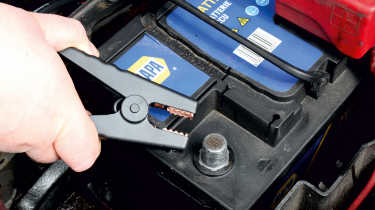
Portable power packs are a way of starting a car without the extra effort of finding another car or a group of volunteers. These devices carry enough charge to jump start your car simply by attaching the built-in crocodile clips to your battery's positive terminal and to an earthing point. Just follow the guide above for jump starting a car, but substitute the donor car for the battery pack.
Once the battery pack is connected, all you have to do then is turn the car on and remove the power pack (positive connector first, then negative), then leave the engine running to recharge the battery.
They tend to be quite a bit more expensive than jump leads, though power packs are a wise investment if you don’t use your car very often or have a habit of leaving the lights on! They may also save you the bother of connecting up your car if another driver needs a jump start.
Check out our best mini jump starter packs here..
How to bump start a car (without jump leads)
Here’s our guide to bump starting a car. Important: This method only works for manual cars.
1. Check the area is safe and clear
Before you try anything, make sure you are not on a busy road or somewhere else dangerous. You will need space to push the car and enough of a run-up to get it moving.
If you are on a hill, point the car downhill and keep your foot on the brake until you are ready to go. If the road is flat, you will need a few helpers to push. Make sure everyone is clear on what they are doing before you start.
2. Get the car ready to move
Sit in the driver’s seat and turn the key to the ignition on position so the dashboard lights come on.
Put the car into second gear, not first, because it gives a smoother start. Press the clutch all the way in and keep your foot there. Release the handbrake when you are ready.
3. Get the car moving
Let your helpers start pushing the car or ease off the brakes if you are on a slope. You need to reach a decent walking pace of around 5 miles per hour. Keep your foot on the clutch until the next step.
4. Release the clutch to start the engine
Once you have built up a bit of speed, quickly lift your foot off the clutch. This will connect the wheels to the engine and spin it fast enough to start. As soon as it does, press the clutch back in so the car does not stall.
If the engine does not fire up the first time, press the clutch down again and repeat the process as it may take a few attempts to get the car going.
5. Let the engine run
Keep the engine running for at least 15 minutes, preferably by driving it, so the alternator can put some charge back into the battery. Once you have done that, the car should be able to restart on its own, but it is still worth checking the battery to avoid getting stranded again.
- • Best winter tyres
- • Winter driving tips
- • Winter car checklist & best buys
- • Hot new 4x4 cars coming soon
- • Fact or fiction? 10 winter driving myths busted
- • Best SUVs and 4x4s to buy now
- • Best small 4x4s to buy now
- • The world’s coldest roads
Come and join our WhatsApp channel for the latest car news and reviews...
Find a car with the experts
